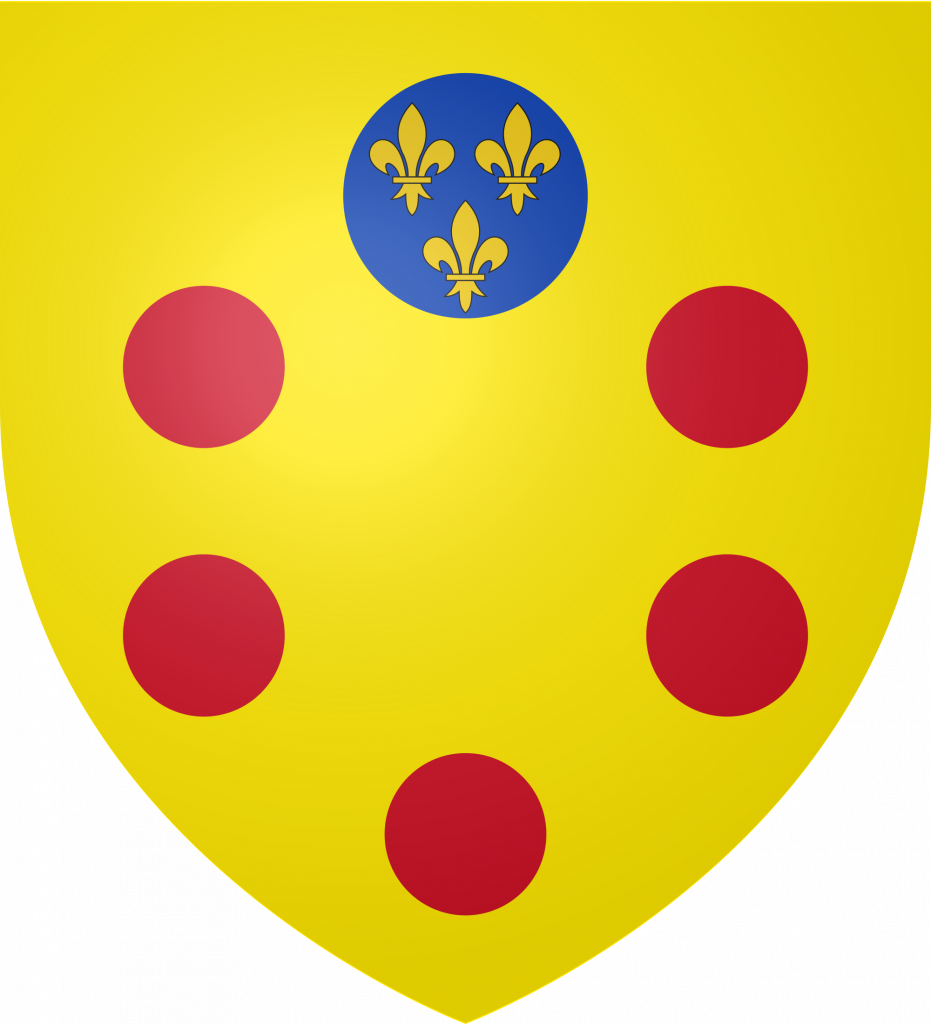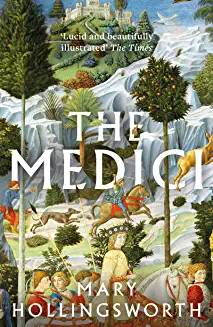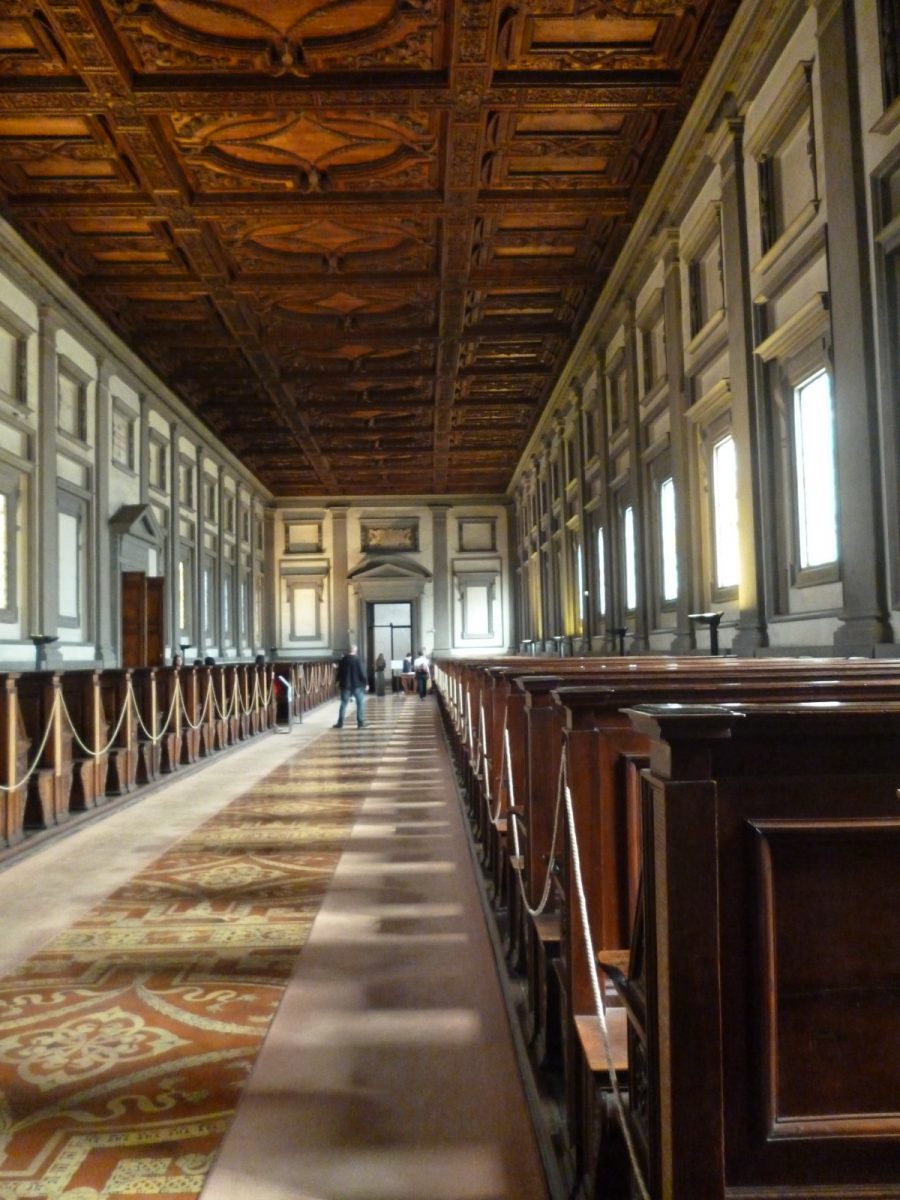Last Updated on November 2, 2023 by Marian Jones
There’s so much more to the San Lorenzo district than the church that this area needs a second episode. We visit two stunning buildings connected to the church: the Laurentian Library, with its ancient book collection first begun by the Medici family and its Michelangelo-designed beautiful interior; and then the Medici Chapel, where about 50 family members are buried, including the three Grand Dukes. It’s a highly-decorated mausoleum which has attracted a range of opinions, from admiring to scathing. And lastly, a little feature on one of the best-known Medici family members very connected to this area, the modestly named Lorenzo il Magnifico.
the laurentian library



Called the Biblioteca Medicea-Laurenziana in Italian, the Laurentian Library is just next door to the San Lorenzo church and reached by passing through some of Florence’s loveliest cloisters. The library was commissioned in 1524 by Pope Clement VII to house a collection very much rooted in the Medici family. There were many books once owned by Cosimo di Medici, including ancient works by Cicero and Pliny and 13th and 14th century Tuscan classics by Dante, Boccacio and Petrarch. Cosimo’s grandson, Lorenzo il Magnifico had also been a great collector of books and his too ended up here. Today, the collection includes 15,000 pieces, including a 5th century work by Virgil and a treatise on architecture by Leonardo da Vinci.
The collection is fascinating, but so too is the building itself. Pope Clement commissioned Michelangelo to design it – although it was later finished by others – and as you go in, you see one of his best jokes. The entry staircase is ‘mannerist’ in style, ie playful. The enormous stone staircase almost fills the room and the ‘pillars’ sink into the walls and are just for decoration. Walk up it to go inside the library, where you first walk through the beautiful reading room, full of polished wooden benches where scholars have studied for centuries. Beyond that are the display rooms where a wide range of the library’s treasures is on display in glass cases.
the medici chapel


Called the Cappelle Medicee in Italian, the Medici Chapel is just round the corner from the San Lorenzo church. Early Medici family members were buried in the church itself, but this mausoleum was built in the 16th century and about 50 family members are buried in its crypt. Upstairs is the splendidly decorated mausoleum where the Grand Dukes – Dukes Cosimo I, II and III – have their tombs and you can see straightaway that it was built to impress. Its marble walls are embellished with jade, turquoise and gold and there are bronze statues of two of the dukes – the third was never finished! – and monuments to other prominent family members such as Ferdinando the first and second.
The chapel was the most expensive monument ever financed by the Medici – quite a claim! – and they were still paying for it in 1743 when the last family member, Anna Maria Luisa, died childless. Not everyone loved it. Tobias Smollett, writing in 1776, found it ‘dark and gloomy’, notwithstanding, as he put it, ‘the great profusion of granite, porphyry, jasper, verde antico, lapis lazuli and other precious stones.’ Lord Byron, who visited in the early 1800s, was much ruder, explaining that he disliked the ’fine frippery in great slabs of various expensive stones to commemorate rotten and forgotten carcases.’ But, keep an open mind. What Smollett dismissed as ‘a monument of ill taste and extravagance’ might strike you as stunning.
lorenzo il magnifico



Lorenzo il Magnifico is remembered for his unstinting support for art and culture in 15th century renaissance Florence. He was an accomplished scholar who gathered the best thinkers of the day around him in his Plato Society and also a generous patron of the arts. He encouraged and commissioned works from men who became world-renowned artists, including Michelangelo, Leonardo da Vinci and Botticelli, so he left a huge legacy. But it’s also true, as the writer Franco Cesati put it, that Lorenzo was ‘the first Medici to spend rather than accumulate’. The period when he ruled Florence was the high point, artistically, but it was also the beginning of a long slow decline for the Medici in Florence.
There is much more about Lorenzo, including his political and family life, on the podcast. Listen and decide whether you admire him, or whether you agree with the author Mary Hollingsworth, for whom ‘Lorenzo’s corruption is a sorry tale of greed’.
Listen to the POdcast
Reading suggestions
The Medici by Paul Strathern
The Medici by Mary Hollingsworth
The Medici by Franco Cesati
links for this post
The Laurentian Library
The Medici Chapel
Previous episode San Lorenzo Church and Cosimo di Medici
Next episode The Piazza della Signoria and the Bonfire of the Vanities






